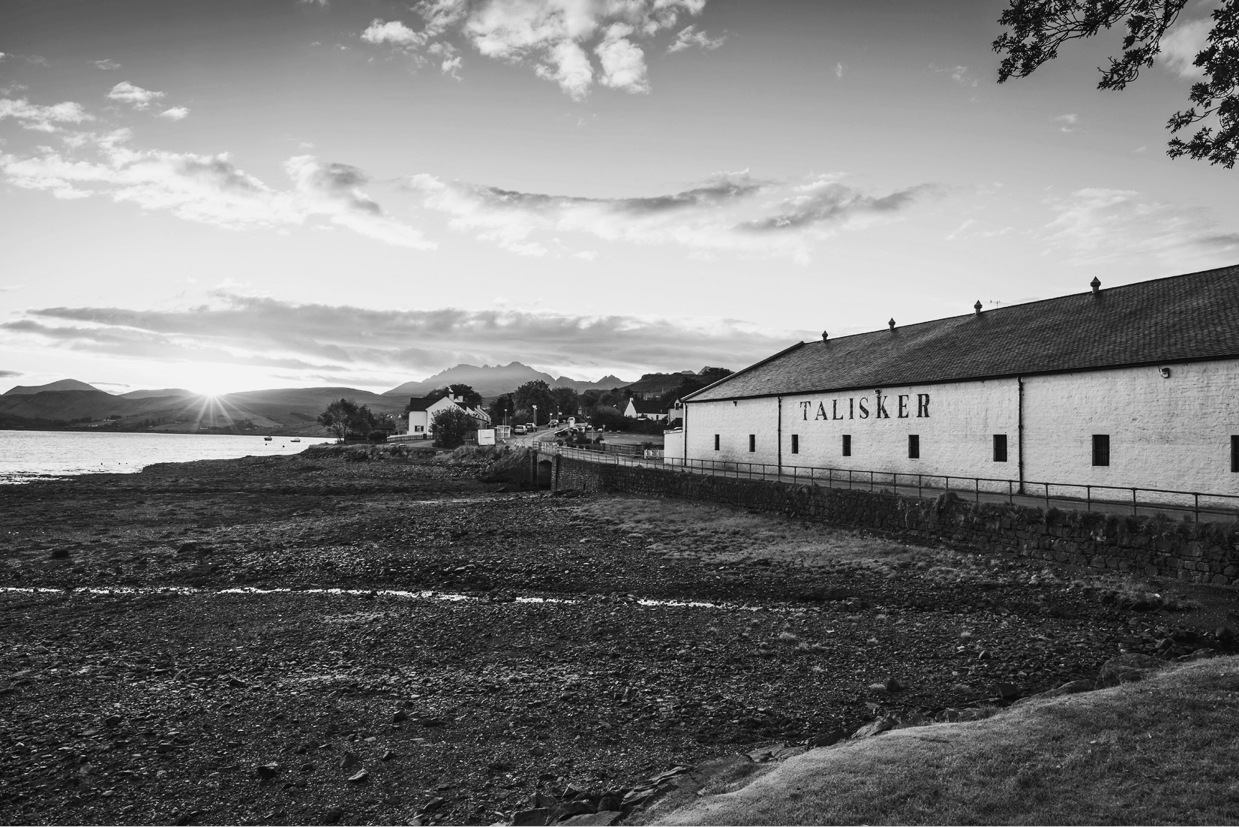Talisker is the only single malt Scotch whisky produced on the wild and hauntingly beautiful Isle of Skye, the largest of the inner Hebridian Islands scattered off the west coast of Scotland. A rich, slightly saline dram with a little fire to it, it is a benchmark of Scottish distilling.
Often referred to as an “Island” whisky, Talisker actually falls under the Scotch Whisky Association’s designation as a Highland malt. Diageo currently owns Talisker and often markets the brand as part of its “Classic Malt” collection. See Diageo.
In 1829, when brothers Hugh and Kenneth MacAskill signed a lease to work the land that would soon house the Talisker distillery, the demographic of Skye was already beginning to shift. Over the next five decades, between twenty thousand and thirty thousand people would be driven from the island in the mass displacement known as the Clearances. Legend has it that the MacAskill brothers, like many lairds and tacksmen (landholders) of the era, forced tenants out of their ancestral lands to be replaced by sheep, which were certainly less feisty and a more reliable source of income. Alongside the sheep and the grass, unfussed by the din of angry farmers, the brothers began distilling. That was in 1831. In 1833, they got a license for it.
The distillery, one of the few in Scotland that practiced triple distillation, proved such a failure, though, that the Bank of North Scotland took it over by 1848. Over the next three-quarters of a century, Talisker passed through more hands than there are ghosts roaming Skye’s wild moorlands. In 1925, it finally settled down as a part of the DCL empire. See Distillers Company Ltd. In 1928, it shifted to double distillation.
A fire ravaged the distillery in 1960, forcing it to close for two years. Exact replicas of the original five pot stills and worm condenser tubs operate today and offer the sixty thousand visitors per year a glimpse into the beauty of distilling in a bygone era. Pot-still lyne arms carry the alcoholic vapor to outside worm tubs—so called because of the coiled pipes submerged within the tank of water. Unusual loops in the lyne arms allow the alcohol vapor to begin condensing even before even reaching the worm tubs.
All water used in Talisker’s production process comes from Cnoc nan Spereag (Hawk Hill), which flows over peat. Talisker is considered a medium-peated whisky, with the malted barley shipped in from Glenn Ord. Since 2008, Talisker has expanded its lineup from the ten- and eighteen-year-old malts to a variety of no-age-statement (NAS) whiskies that include the Talisker Storm, 57 North, Dark Storm, and Port Ruighe. It has also long been a key component of the blend used for Johnnie Walker Black Label.
See Johnnie Walker; whisky, scotch; and still, pot.
Craig, H. Charles. The Scotch Whisky Industry Record. Dumbarton, UK: Index, 1994.
“Talisker Distillery.” Difford’s Guide. https://www.diffordsguide.com/producers/72/talisker-distillery/history (accessed April 6, 2021).
By: Heather Greene
 The Talisker distillery, Isle of Skye, Scotland. Source: Courtesy of Diageo.
The Talisker distillery, Isle of Skye, Scotland. Source: Courtesy of Diageo.
